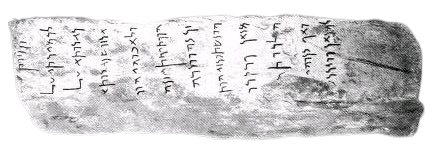Syriac Aramaic is a group of dialects of the Aramaic language that were spoken in the region of Mesopotamia, which roughly corresponds to modern-day Iraq, Syria, and southeastern Turkey. Syriac Aramaic emerged as a distinct dialect of Aramaic in the 1st century CE and became the language of the Syriac Christian community.
There are several Syriac Aramaic dialects, including:
1. Eastern Syriac: This dialect is also known as the Assyrian language or the Nestorian language. It is spoken by the Assyrian people, who are mainly located in Iraq, Iran, and Syria. Eastern Syriac has several sub-dialects, including the Chaldean, Assyrian, and Turoyo dialects.
2. Western Syriac: This dialect is also known as the Syriac language or the Jacobite language. It is spoken by the Syriac Orthodox Church and other Syriac Christian communities in Syria, Lebanon, and Turkey. Western Syriac has several sub-dialects, including the Turoyo and the Mlahsô dialects.
3. Central Syriac: This dialect is also known as the Aramaic language or the Syriac language. It was spoken in the region of Edessa, which is now modern-day Urfa in southeastern Turkey. Central Syriac is now extinct, but it was an important literary language in the early Christian period.
Each Syriac Aramaic dialect has its own distinct features, but they share a common vocabulary and grammar. The Syriac language has had a significant impact on Arabic and other Semitic languages, as well as on the development of Christian theology and literature in the Middle East.
